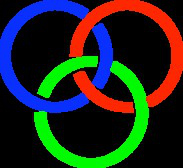Orateurs
Aksel Jensen
(Aarhus University)
Artem Volosniev
(Aarhus University)
Dmitri Fedorov
(Aarhus University)
Nikolaj Zinner
(Aarhus University)
Description
We investigate two, three and four polarized cold dipolar molecules in layered
structures [1]. We first study the two-body
problem with anisotropic potential. We found numerically that
the two particles always form a bound state. We shall give analytical
expressions for energies and wave functions in the weak coupling limit
where universality or model independence are approached, and the
binding energy is extremely small [2,3]. The universal limit is essentially reached for
experimentally accessible strengths. We compare analytic and
numerical results obtained by the stochastic variational method.
We then turn to three identical dipolar molecules occupying only two
layers. We show that all these structures are unbound but a reduction
of the in-layer repulsion to about one third of the natural value
would lead to binding. Extension to four dipolar molecules in two planes are
always unbound. Two molecules in a central layer with one molecule in
each of the neighboring layers is the structure closest to forming a
stable four-body configuration with energy below the threshold
energies. We calculate numerically the repulsion reduction in the
central layer necessary to provide stability for both bosons and
fermionic systems. We shall discuss the different two-dimensional few-body configurations, their structures and energies.
[1] J.~R. Armstrong, N.~Y. Zinner, D.~V. Fedorov, A.~S. Jensen,
J. Phys. B: At. Mol. Opt. Phys. - B/374825/PAP/197920
[2] A.~G. Volosniev, N.~T. Zinner, D.~V. Fedorov, A.~S. Jensen,
Phys. Rev. Lett. {\bf 106} (2011), 250401.
[3] A.~G. Volosniev, N.~T. Zinner, D.~V. Fedorov, A.~S. Jensen, B. Wunsch,
J. Phys. B, {\bf 44} (2011), 125301
Auteur
Artem Volosniev
(Aarhus University)
Co-auteurs
Aksel Jensen
(Aarhus University)
Dmitri Fedorov
(Aarhus University)
Nikolaj Zinner
(Aarhus University)

